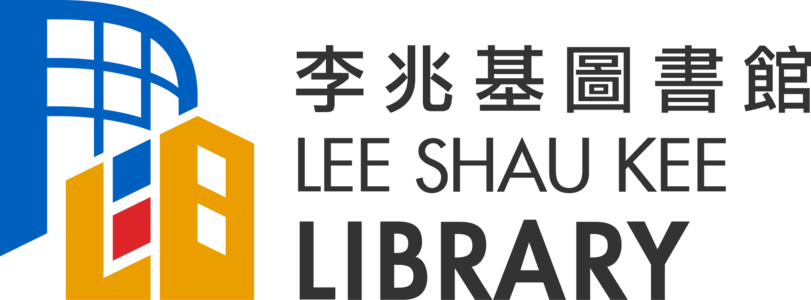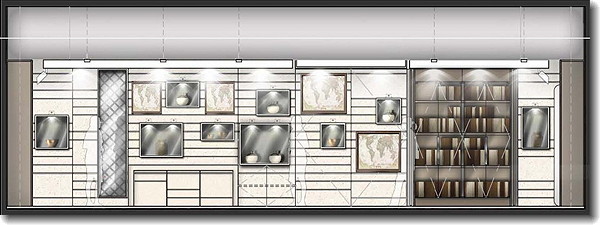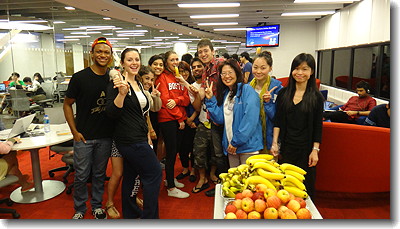
Issue No. 89
September 2013
All the Library staff members had a retreat in July 2012 to develop a 3-year strategic plan for 2012-2015. We identified 10 strategic directions with new initiatives for the coming years. Looking back after one year’s implementation, we have accomplished a good deal in each of these areas.
The Library had a smooth transition to 334, with over 2 million user traffic recorded at the exit gates. Electronic resources have been further strengthened. The Learning Commons opening for 24 hours made it an even more popular place.
The number of information literacy attendees was at record high. The University also received donations to name the Learning Commons and the Special Collections Gallery. Below is a summary of major initiatives with fruitful outcomes.
Enriching Research Support Services to the University Community
HKUST Scholarly Publications Database – We have worked with VPRGO to develop this database to index publications authored by HKUST researchers. By June 2013, it has 50,180 publications, 498 publicly released author profiles, and was accessed 190,787 times. The research outputs of the University are now easily discoverable. The database becomes an enriched tool internally for various analysis and reporting and externally by industries and researchers for knowledge discovery. We have developed SPD APIs to support the Research Outputs Submission System (ROSS) and to help power PAO’s revamping of the HKUST Website. We also developed a program to harvest the cited count records on a frequent automated basis.
The database becomes an enriched tool internally for various analysis and reporting and externally by industries and researchers for knowledge discovery. We have developed SPD APIs to support the Research Outputs Submission System (ROSS) and to help power PAO’s revamping of the HKUST Website. We also developed a program to harvest the cited count records on a frequent automated basis.
RAE 2014 preparation – To prepare for the Research Assessment Exercise, the Library formed an RAE Team. Team members helped in the design of Research Outputs Submission System (ROSS) interface, created the document repository, programmed the token-based single-sign-on interface, developed the research output de-duplication report mechanism. We are currently verifying and inputting bibliographic information, obtaining full-text of research outputs, cropping abstracts from full-text, applying for copyright clearance, handling transactional licenses, arranging submission of physical items and liaising with cost centers. The team worked closely with cost centers in both the dry run and the final submission exercises.
Citation Certification Service – Citation metrics are used by many academics and researchers to gauge the influence of their work. Metrics such as citation count, h-index, and impact factor are quantifiable measures of research output and may help making decisions on promotion, tenure and nomination.
To support our HKUST researchers, the Library provides citation search certification service to faculty members who are applying for fellowships and awards from different academic bodies including Academic Sinica, the Chinese Academy of Sciences and the Royal Society.
Searches are performed on Web of Science and Journal Citation Report databases based on the publication list provided by the faculty members. A letter with the total number of citing references will also be issued by the Library. Since its first launch in 2006, the Library has offered more than 100 citation search services to school and faculty.
Authoring workshops by publishers and vendors – We invited four publishers (BioMed Central, Taylor & Francis, The Institute of Physics, and Elsevier) to give different talks to 124 people, mostly PGs. Two were recorded and made available on streaming video. The Library received positive feedback from the attendees.
UROP consultation – To help students complete their UROP projects, a total of nine consultation sessions on how to use the best research tools were conducted for students from the departments of ACCT, FINA, CBME and SOSC.
Kindle Ebook Readers
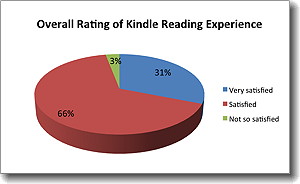 To cater to the reading habits of our i-generation users, the
To cater to the reading habits of our i-generation users, the 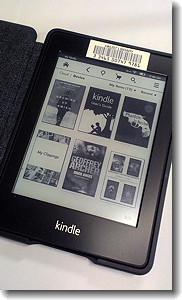 Library acquired ten Kindles for check-out. Each Kindle is pre-loaded with 20 popular eBooks. All Kindles were checked out within an hour of the initial announcement. There were 117 checkouts and 174 holds from 15 April – 21 July 2013. Each Kindle kept a long queue of holds. In a survey to collect Kindle users’ feedbacks, 97% were satisfied or very satisfied with the experience and 89% were satisfied with the variety of loaded Kindle titles.
Library acquired ten Kindles for check-out. Each Kindle is pre-loaded with 20 popular eBooks. All Kindles were checked out within an hour of the initial announcement. There were 117 checkouts and 174 holds from 15 April – 21 July 2013. Each Kindle kept a long queue of holds. In a survey to collect Kindle users’ feedbacks, 97% were satisfied or very satisfied with the experience and 89% were satisfied with the variety of loaded Kindle titles.
With the Provost’s support, the Library has purchased 10 more Kindles and is adding more pre-loaded e-books, especially Chinese ones. Some users suggested checking out the eBooks directly to their own Kindle devices. However, this model is only available in public libraries in the United States so far. We will continue monitoring Kindle developments and revise the borrowing model when appropriate.
Archives & Special Collections – Extension & Digitization Project
The University Archives and Special Collections was empowered by a donation of $3 million from Dr Ko Pui-shuen, which is funding two projects. One is to build a gallery for displaying the antique maps, original classic works of science and technology and the archival documents of the University. A space next to the Archives and Special Collections reading room is being renovated.
The gallery, to be opened in September, will be named “Hong Kong Chiu Chow Chamber of Commerce Ko Pui Shuen Gallery (香港潮州商會高佩璇展閱廳)” to honor the donor. Equipped with movable display panels, flexible furniture, PC booth, LED display and projectors, this new gallery space also facilitates talks and exchange activities on the study and research of topics related to our collections. With the opening of the gallery, the hidden gems of the Special Collections become available through regular thematic exhibitions to bring them out of storage.
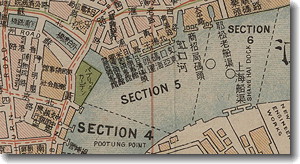 The second project is to digitize the archival materials, maps, and rare books of the collections. A large format scanner for documents and maps up to 36 inches wide was brought in. The scanning of 340 maps of the Special Collections and 700 HKUST posters was completed in June. High resolution images of these materials are available for online viewing via the Library’s digitization platform – Rare & Special e-Zone. Launched in August, this in-house developed platform includes a search interface and powerful viewers for users to navigate the digital objects of this project. Another book scanner was set up in July. Atlases, travelogs and rare books in the history of science are being digitized. Full text of classic works by Copernicus, Galileo and Newton will be available for online viewing very soon. Selective thread-bound books will be included as well. An estimated 250,000 pages of text will be scanned and available online by 2015.
The second project is to digitize the archival materials, maps, and rare books of the collections. A large format scanner for documents and maps up to 36 inches wide was brought in. The scanning of 340 maps of the Special Collections and 700 HKUST posters was completed in June. High resolution images of these materials are available for online viewing via the Library’s digitization platform – Rare & Special e-Zone. Launched in August, this in-house developed platform includes a search interface and powerful viewers for users to navigate the digital objects of this project. Another book scanner was set up in July. Atlases, travelogs and rare books in the history of science are being digitized. Full text of classic works by Copernicus, Galileo and Newton will be available for online viewing very soon. Selective thread-bound books will be included as well. An estimated 250,000 pages of text will be scanned and available online by 2015.
Resource Sharing
To enhance resource sharing, the Library participated in Rapid Book Chapter Service in October 2012, allowing us to borrow and lend book chapters through the Rapid ILL system. There were 126 borrowing & 222 such lending requests in 9 months.
The Library endeavours to support PG students’ study and research activities. Electronic document delivery service was expanded to PG students in October 2012. This service makes our print and microform collections available to them electronically. There was a 202% increase in EDD requests from Oct-Jun 2012 vs. Oct-Jun 2013, with most of the growth from PG students.
Additionally, with University support, the Library launched a new service specifically for RPGs in January – the Dissertation Purchase Subsidy Scheme. Under this trial Scheme, the University will subsidize ~80% of the cost for buying a dissertation requested by a research postgraduate. The student only needs to pay a $60 flat fee.
This trial will be extended through 2014, and the flat fee will be reduced from $60 to $30. This service will also expand to cover all dissertation and thesis requests, not just from UMI, but also those held elsewhere in the world.
Learning Commons Growth 2012/13
2012/13 was a year of growth and reflection for the Learning Commons. It transited to 7×24 operation in phases, went through an assessment to evaluate services, supported the heart-warming exam-week Snack Breaks, and became a popular spot that many university units proudly show to visitors.
The Learning Commons, being an integral part of the Library, was designed with the ability to provide service when the Library is closed. However, operating 7×24 is not as simple as keeping the doors open. The Library moved there in phases: from 22 hours daily in late 2012; then we managed to extend to 24 hours with no increase in human resources. In Spring 2013, it opened 7×24 from March to May.
On average, over 200 people use the LC at midnight and over 100 at 3am; in May, the highest counts were 418 at midnight, 247 at 3am, and 108 at 6am. Staying open during public holidays was also very well-received by the university community.
A key project this year was assessment. Three student focus groups, one student survey and one service partner survey were conducted in the Spring semester. This was very successful – helping us learn about your needs, find out what was done right, and what can be improved. 90% rated the Learning Commons as “Important” or “Very important”, showing that the Learning Commons has become a primary study space for students. We also found the LC is too small and crowded to meet user demand. Such findings will drive future planning of study space towards a similar friendly, social and supportive style.
The Library also offered ten Snack Breaks during exam weeks last year. Sponsored by SAO and designed to lighten the study atmosphere, we shared snacks and drinks with about 300 students each night.
The Learning Commons has drawn a lot of interest among university guests. It has become one of the most popular stopping points for university visitors. Since opening the LC, the number of Library tours increased over 350%, and the number of visitors increased over 500%.
Engaging Users in General Education Activities
We strengthened user communications on library resources and services through outreach, patron engagement and general education activities.
Three Exhibitions were organized, including “Gorgeous China, The Colorful West”, by Mr Jin Shouxian, along with a well-received Gallery Tour and 3 Talks, with over 250 attendees; “So-lan’s Totem” by Ms So-lan Chiu, who also conducted a Gallery Tour, 3 talks for HKUST members, and more than 10 private talks and tours for over 200 people (and also donated 5 Totem poles to the Library); “Our Miracle Continues – A Visual Presentation”, a re-run of the HKUST 20th Anniversary Exhibition and a popular stopping point for VIPs and guests.
Six Book Talks were hosted, including Make Every Word Count: Stealing the Secrets of Better Writing from Advertising by Mr Philip Yeung; Reading History: Some Virtues and Vices by Dr David Mole; Reading about Another Ancient Culture: A Chinese Interest in the History of Jewish People by Dr ZHU Li Jing; The Lahu minority in Southwest China : a response to ethnic marginalization on the frontier by Professor MA Jianxiong; London – beyond fish n’ chips and Big Ben by Ms Bonnie Chen; and 鱷口下的賺錢街 – 8個股市投資致勝法則 by Professor Philip SY Cheng.
Ten Snack Breaks were hosted in partnership with SAO, reaching 3,000 students during exam times.
“Art Dimensions” was begun with UCEO and CFA, displaying student artwork in the Library and creating a Web platform for comments and sharing.
The “We All Read” interactive social media platform was launched to encourage the HKUST community to share reading fun, with over 40 posts from staff, students, alumni and faculty.
A Movie Screening was held in partnership with CFA – conducting a film screening in the Media Production Studio as a pilot for using the venue for cultural events.
Orientation & Library Instruction: Challenges and Excitement
Arrival of the long-anticipated double cohort of first year UGs brought challenges and excitement. Over 700 new UGs joined the Library orientation tour and were welcomed by many colleagues who usually work behind the scenes, including those from Acquisitions, Cataloging, Systems, and Administration. All volunteered to help as tour guides, glad of the chance to greet and introduce themselves and our resources, facilities and services to the earnest new UGs.
After a successful pilot collaboration with the Center for Language Education in 2011/12, integration of information literacy instruction into 1st and 2nd year language courses was at full steam this year. Librarians from Reference and Technical Services taught 84 sessions to 2,870 1st year LANG 1001/1002 students.
Searching Research Literature Effectively and Academic Integrity & Intellectual Property were offered as a trial run for next year’s Professional Development Course series for RPGs. With other classes for CLE programs, course-related instruction and open workshops, 328 library sessions were offered to 8,321 staff & students.
To supplement face-to-face instruction and enhance student learning, many course guides were created, often embedded with interactive e-learning objects. The Library Research Guide for LANG 1001/1002 is embedded with 2 interactive animations: What is a Citation? and How to Cite in APA Style. Online quizzes were also incorporated into LANG 1001 and 1002 course sites on LMES, helping reinforce learning and test understanding.
These e-learning resources received very positive feedback from students, and instructors considered them an important component of their courses. It seems we survived the double cohort and this next year will be an adventurous yet fruitful one for all.
Prestigious International Cooperative Cataloging Memberships
We successfully maintained membership in the Name Authority Cooperative Program (NACO), being the only member in China and contributing 513 name and series authority records. We are also a full member of theCooperative Online Serials Programs (CONSER) of the Program for Cooperative Cataloging (PCC), where we contributed 382 records. PCC is an international cooperative effort aimed at expanding access to library collections by providing useful, timely, and cost-effective cataloging that meets mutuallyaccepted standards of libraries around the world.
In August 2012, we successfully completed the Resource Description and Access (RDA) in NACO training by PCCand were granted independent status, with a complimentary note from the PCC coordinator saying
“the HKUST Library has demonstrated a high level of competence in RDA authority work, and all of this was accomplished in a very short time. This is an outstanding and commendable achievement.”
In May 2013, we were also granted independence in Series Authority Record work.
Library Spaces and Facilities
It was another very hectic and event-filled year for Library Facilities. Highlights include:
- an entry gate system for the Learning Commons, enabling more secure and flexible 24-hour access
- user-controlled ceiling lighting in the ‘point’ area of LG4, enabling more flexible use of this space
- cutting a secondary door for access to the LG4 rear terrace, to reduce program interruptions and expand the availability of the terrace for students
- more study tables for the rooftop garden
- upgrading older group study rooms, starting with wall-mounted display screens for each room
- adding another couple hundred power sockets for users, especially on the LG levels
- swapping group study rooms from LG3 to LG4, to reduce conflict with users of the quiet floor
As expected, 334 led to increased usage and more breakdowns and mess. Extra cleaning was arranged, including shampooing of the refreshment zone carpet. In the Learning Commons, these efforts were difficult to plan around the expanded 24/7 operation.
In addition to Summer projects listed above, the following efforts are in the works: A donor-funded special collections gallery on 1/F will be opened later this month; in coordination with UCEO, the Library is greatly expanding options for displaying student artwork; we’re working to modify terrace doors to reduce wind problems; service provisions for the LSK Campus are being explored – two book returns may be sited there, and we are open to other needs and suggestions.
We are always looking for ways to make the physical space of the Library better for you, and more effective for education and learning. Please send us your ideas and suggestions, along with your praise and complaints, at library@ust.hk.
Equipping Staff with Expertise and Skills
The Library expended much effort to encourage staff development. Compared to last year, we increased the number of programs attended and enrolments by 138% and 337% respectively.
Professional workshops and conferences – Library staff attended and presented papers 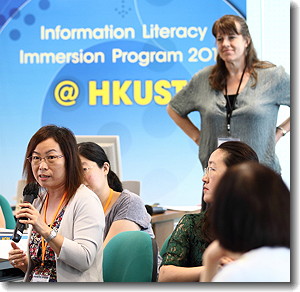 at 13 local and 8 overseas conferences/workshops to keep abreast of the latest trends and new technologies in libraries. The ACRL Information Literacy Immersion Program hosted by JULAC and organized by us was also a great success.
at 13 local and 8 overseas conferences/workshops to keep abreast of the latest trends and new technologies in libraries. The ACRL Information Literacy Immersion Program hosted by JULAC and organized by us was also a great success.
Self-organized workshops – We organized 16 on-site workshops including those given by a library director and an academic faculty. There were also refresher courses to update front-line staff with procedures and service skills.
Staff Retreat – For the first time, we held a Staff Retreat for all Library staff in 2012 to develop a Strategic Plan for 2012-2015, and a Scenario Planning Workshop in 2013. These allowed our staff to collectively engage in strategic planning and communicate across units.
Staff sharing sessions – 15 staff sharing sessions were held through 2 initiatives: “Library Connect” provides a platform for Library staff to share their professional works, while the lunch-time “Fun紛 Café” sessions encourage staff socialization around common interests.
HKUST training programs – Library staff attended 6 training programs organized by HRO, PTC, and ITSC on topics pertaining to their duties.
Lynda.com – We offered an Online Software Training Video program via Lynda.com, allowing staff to learn by themselves at their own convenience.
Librarians Engaged in Research – We initiated this program to encourage each librarian to engage in and share their findings on a work-related research topic of their choice.
Presentations/Publications – Librarians actively participated in many professional presentations and publishing activities. Topics ranged from intra-institutional engagement and the use of e-resources to exploring future directions for academia.
Collection Expansion
To support curriculum expansion under 334, the Library’s collection received a strong boost in all areas in the last academic year.
E-Reference – China yearbooks are an excellent research tool for China studies. The bulk of our print China yearbooks have been migrated to e-format, giving full-text access to 105 titles in over 2,000 current and back volumes. A range of e-reference titles from popular culture to nanoscience were also added.
eBooks – eBooks are taking flight. For the past two years, the average number of chapter downloads per year was 300,000. Thousands of titles from Palgrave Connect, IGI Global, CRC Press, Morgan and Claypool were added. In the pipeline are 1,340 Chinese eBooks from Airiti, a major ebook aggregator from Taiwan.
The Library piloted 2 usage-driven eBook acquisition schemes.Ebrary Demand Driven Acquisition (DDA) has 18,000 discovery records loaded into our Catalog. A purchase is triggered when use of a book exceeds a set limit. From November 2012 to June 2013, 530 Ebrary titles were triggered for purchase – but only of eBooks that are found useful. Users have access to thousands of non-owned eBooks without knowing that they are the ones making the purchase decision.
The other scheme is Wiley Usage Based Collection Management (UBCM). Trial access to the full reservoir of Wiley eBooks is available through January. In February, the Library will make purchase decisions based on usage and subject relevance.
Streaming 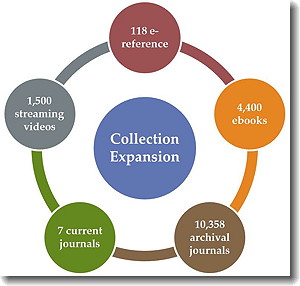 Videos – A few streaming collections have been added. Critically acclaimed Phoenix TV series, 世紀大講堂 and 開卷八分鐘, Engineering Case Studies, Asian Films in Video and Filmakers Library Supplement further strengthen the Library’s support for engineering and general education.
Videos – A few streaming collections have been added. Critically acclaimed Phoenix TV series, 世紀大講堂 and 開卷八分鐘, Engineering Case Studies, Asian Films in Video and Filmakers Library Supplement further strengthen the Library’s support for engineering and general education.
Journal Archives and Subscriptions – Ejournal usage climbed for 3 consecutive years, hitting 1.3 million downloads in 2012. Having analysed our turnaway statistics, four journal archives were added:Institute of Physics journal archive (1874- 2002), Springer Mathematics and Statistics Online Journal archive, 3 new JSTOR collections and Shanghai Library’s Mingguo Journals Full-Text Database (1911-1949). New subscriptions are strategically kept low to minimize inflation impact. One notable addition is JOVE, Journal of Visualized Experiments, a highly requested title from our life science users.
E-Learning Videos and Games
The Library is always looking for ways to engage library users and help you learn in a fun and convenient way.
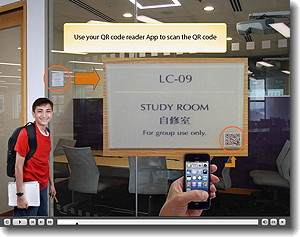 In the past year, the Library E-Learning Team has created more than 30 e-learning objects (mostly videos) to serve your learning needs. These include short videos on navigating databases (e.g., 10 on Bloomberg and 2 on WiseNews), using equipment, and on library services like how to use QR codes to check study room schedules and reserve rooms.
In the past year, the Library E-Learning Team has created more than 30 e-learning objects (mostly videos) to serve your learning needs. These include short videos on navigating databases (e.g., 10 on Bloomberg and 2 on WiseNews), using equipment, and on library services like how to use QR codes to check study room schedules and reserve rooms.
Most of the objects are embedded in library course, database, and subject guides. You can also find all of them at the Library E-Learning page.
Come and explore the videos and games. Watch them anytime anywhere using an Internet-accessible device. Better yet, learn what you really need! Learn at your own pace!
Providing Effective Information Access and Discovery Systems
E-learning Projects – In the past year, we have executed several e-learning projects. Most notable were migrating old video content onto a new Media Streaming Server using Wowza software; developing an E-learning system platform to host Library-developed e-learning objects; and introducing a Kindle-based e-book circulation capability.
Class Registration System Enhancements – We developed a survey module for Library class attendee feedback and evaluation. Work is continuing on enhancements, including the ability to take attendance, the sharing of RPG attendance data for the Professional Development Course Systems, enhanced statistical reporting, and a publicly accessible view of available Library classes.
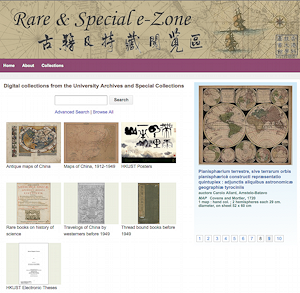 Creation of Tools for Library Users and Staff – A wide array of tools were created, including a sophisticated Library Floor Plans interface for desktop and mobile devices, paired with a digital signage system. Other programs developed include the We All Read system, an Interactive Exhibition System for physical and online user feedback, a one-stop portal for HKUST Publications and Newsletters, and an internal cms4mail program for enhancing and standardizing Library announcements.
Creation of Tools for Library Users and Staff – A wide array of tools were created, including a sophisticated Library Floor Plans interface for desktop and mobile devices, paired with a digital signage system. Other programs developed include the We All Read system, an Interactive Exhibition System for physical and online user feedback, a one-stop portal for HKUST Publications and Newsletters, and an internal cms4mail program for enhancing and standardizing Library announcements.
Information and Learning Commons Systems Support – Existing systems support for the two Commons expanded dramatically to accommodate increased service hours, heavier equipment use, and ARRO classroom support. Notable projects completed were the four contingency classrooms for ARRO; a classroom monitoring system on the LC computers to better support teaching requirements; a Video Conference System to meet expanding demands; and equipping all public computers with an improved software recovery mechanism.
COMING:
September Book Talk : The Journey of a Successful Value Investor
Investing legend Warren Buffett once said:
“success in investing doesn’t correlate with I.Q. once you’re above the level of 125. Once you have ordinary intelligence, what you need is the temperament to control the urges that get other people into trouble in investing.”
Value investing is not a staid and old-fashioned investment strategy. It is dynamic and ever-evolving. In The Value Investors: Lessons from the World’s Top Fund Managers (HG4621 .C43 2012), Ronald Chan interviewed 12 value-investing legends from around the world to learn how their personal background, culture and experiences shaped their investment mindset and strategy.
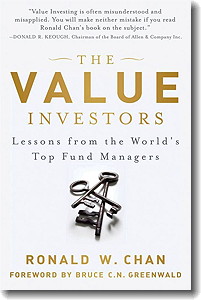 Join Ronald on September 26th @ 5:30pm in the Library Gallery for a book talk on his writing journey, and to learn what it takes and means to be a successful value investor. The talk will be in Cantonese. The Chinese translation of his book is 金錢王者:全球價值投資大師致勝之鑰 (HG4621 .C4312 2013 – http://catalog.ust.hk/catalog/bib/b1228080).
Join Ronald on September 26th @ 5:30pm in the Library Gallery for a book talk on his writing journey, and to learn what it takes and means to be a successful value investor. The talk will be in Cantonese. The Chinese translation of his book is 金錢王者:全球價值投資大師致勝之鑰 (HG4621 .C4312 2013 – http://catalog.ust.hk/catalog/bib/b1228080).
Ronald is the founder of investment management company Chartwell Capital Limited, and a frequent contributor to financial newspapers and magazines in the Asia- Pacific region. He also authored Behind the Berkshire Hathaway Curtain: Lessons from Warren Buffett’s Top Business Leaders (Wiley). Ronald received Bachelor of Science degrees in Finance and Accounting from the Stern School of Business at New York University.
last modified 21 December 2016

